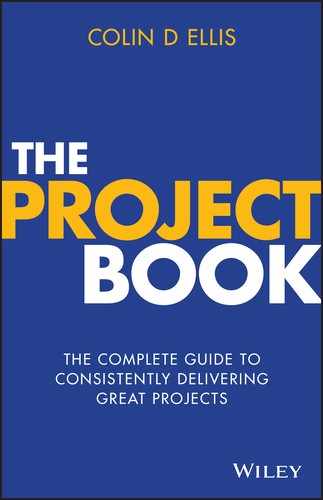CHAPTER 31
MAKE TIME FOR INNOVATION
No word is more overused or misunderstood in business than innovation (although agile is currently giving it a run for its money). Despite that, one of the greatest innovations has been propping up project management techniques for years.
Founded at the turn of the 20th century, the company 3M struggled for years over how to run a sandpaper factory they’d bought. New money was required to keep the company going while they toyed with new ideas and ways to use the minerals they had access to. In 1925, one of their employees, Richard Drew, created a low-tack tape to help reduce the amount of touch-up work auto-body workers had to do once they’d removed the protective butcher paper. His invention of cellulose tape (now known as Scotch tape) in 1930 completely turned 3M’s fortunes around.
After the Second World War, the owners of the company recognised that if they wanted to continue to make money and not return to the struggles of their early existence, they needed lots of new ideas. So they introduced a staff perk like no other: ‘15% time’, or six hours a week to work on the things they didn’t get time to pursue during normal working hours. That’s right, almost a day on ‘pet projects’. In those days, 3M called this ‘Permitted Bootlegging’, which I much prefer.
‘What are you doing this afternoon, Colin?’
‘Oh I’m off to do a bit of permitted bootlegging.’
See, much better than ‘working on some new ideas’.
A pet project Richard Silver was working on was a super-strong adhesive for use in the aerospace industry. The problem was it was just too weak and was roundly rejected by the 3M management team. Silver tried to think of a way of marketing his adhesive but couldn’t come up with one, so he gave a number of seminars to ask others for ideas through a ‘Tech Club’. The 15% time had fallen into disuse under the previous CEO (who had instead introduced cost-cutting six-sigma management techniques), so the Tech Clubs were used to reintroduce it.
In 1974, 3M scientist Art Fry came up with a marketable use for the adhesive at one of the Tech Clubs. He found that the notes he used to mark his place in his hymn book on a Sunday kept falling out. He asked Silver to send him some of the adhesive and over the next few weeks they worked together to get the adhesive and notes to work as they wanted.
They created some of these new ‘sticky pads’ and circulated them to 3M employees to test. They weren’t as popular as they had hoped, but Fry then had another idea. He handwrote some questions on a sticky and stuck it on a report. He then shifted the note from one report to another and passed it to a colleague — and a whole new way of communicating was born.
There were numerous obstacles before the invention was commercially viable. It required new machinery to coat the notes, and given that nothing like it had ever been done before it was still deemed to be too risky. So using his own time (remember, he was still doing his day job), he developed a prototype machine in his garage to demonstrate that it wouldn’t be as hard as the engineers thought! It was so big they had to remove the doors of his garage to get it out.
On 6 April 1980, the world was introduced to the Post-it note, and today 3M has revenue of over $8 billion.
The moral of that story is that if you truly want innovation in your projects or business, you need to give the people with the ideas the time and opportunity to be creative with them, and to accept that they may fail. You can’t hold them to immovable deadlines or push them to work 60-hour weeks and expect magic. Worse still would be to force them into a process for being creative, then admonishing them for not delivering. As comedy legend and motivational speaker John Cleese said, ‘Nothing will stop you from being creative so effectively as the fear of making a mistake’.
You need to ensure that time for innovation is built into your schedule to allow the creative minds in the team to try out different ideas to address the problems you face. You also need to ensure that having committed to innovation, everyone — senior management in particular — adopts the same mindset, and that failure is seen as nothing more than finding out what doesn’t work.
Mindset is very important, as often the biggest barrier to innovation is the simple fact that people don’t want to (or don’t know how to) think differently. You need to create a different dynamic, something that doesn’t feel like business as usual, that feels more creative than normal. As a project manager, I had a box of tools to encourage this — pens, Post-it notes, games, Lego, stress balls, anything I could get my hands on that might help people change their energy or way of thinking.
Projects consistently require this kind of stimulation not only to ensure the final product delivered is fit for purpose, but also when resolving issues. All too often an individual tries to solve a problem on their own at their desk, when a group of people thinking and working differently could have solved it in half the time.
‘For good ideas and true innovation,’ said American entrepreneur Margaret Heffernan, ‘you need human interaction, conflict, argument, debate’. And she’s right, but what you need more than anything else is time. Give your people the time to be creative and great things will follow.
